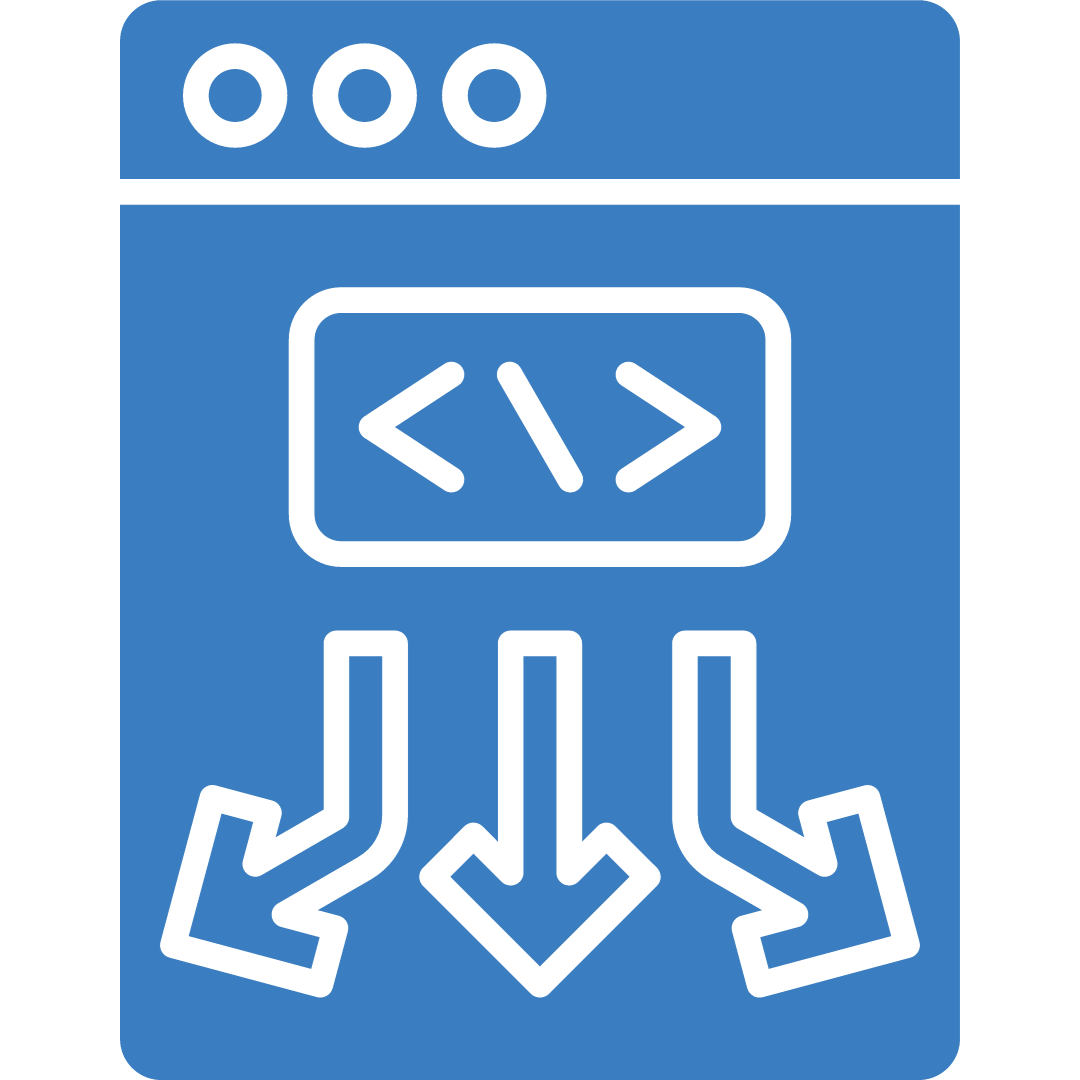Low Code Automation: What Is It and Why Is It the Future of Software Testing?

In the rapidly evolving digital landscape, businesses are constantly on the lookout for innovative solutions that can streamline operations, boost efficiency, and maintain competitiveness. One such breakthrough technology that has gained significant traction in recent years is low code process automation. This technology is transforming the way businesses approach software development and testing, offering a plethora of benefits that make it an attractive proposition for businesses of all sizes and across various industries.
What is Low Code Automation?

Low code automation is a software development approach that requires little to no coding to build applications and processes. Using visual interfaces with drag-and-drop functionalities and pre-built templates, low code workflow automation enables developers to design and develop software applications with minimal hand-coding. This approach is not only user-friendly but also highly efficient, making it possible for even non-technical users to create functional applications.
Why Opt for Low-Code Automation?

Low-code automation simplifies the process of automating and streamlining workflows. This accessibility factor is particularly advantageous for rapidly scaling processes and empowering business teams to engage more collaboratively in problem-solving and strategic planning.
Additionally, low-code automation software enriches existing systems, applications, and databases, effectively breaking down data silos and enhancing user experiences for both employees and customers. Its capacity to standardize processes further simplifies the control, adaptation, and security of processes across the entire enterprise.
Apart from automating workflows, low-code automation software typically incorporates process management functionalities such as:
- Visualizing processes
- Orchestrating processes
- Generating documents
- Creating forms and portals
- Managing approval flows
- Overseeing request management
- Providing monitoring and reporting capabilities
Advantages of Low Code Automation

1. Speedy Development and Deployment
One of the most significant advantages of low code automation is the speed of development and deployment. Traditional hand-coding can be a time-consuming process, often taking weeks or even months to develop a functional application. In contrast, low-code platforms allow developers to create applications within a fraction of that time, enabling businesses to respond swiftly to market changes and customer needs.
2. Reduced Costs
Low code automation also dramatically reduces the costs associated with software development. It minimizes the need for a large team of developers, reduces the time spent on coding, and decreases the likelihood of errors that can be expensive to fix. Additionally, the quick turnaround time means businesses can start reaping the benefits of the application sooner, improving the return on investment.
3. Increased Productivity
In terms of productivity, low code automation is a game-changer. By simplifying the development process, it frees up developers' time, allowing them to focus on more complex tasks and innovation. This not only helps increase productivity of employees but also enables businesses to leverage their technical resources more effectively.
4. Enhanced Agility
In today's fast-paced business environment, agility is key. Low code automation allows businesses to adapt quickly to changing market conditions, customer preferences, and business needs. They can easily modify applications, add new features, or build entirely new applications to meet emerging requirements.
5. Democratization of Development
The democratization of development is another significant advantage of low code automation. Low code platforms are designed to be user-friendly, making it possible for non-technical users to create applications. This empowers more employees to contribute to the digital transformation of the business, fostering a culture of innovation and collaboration.
Low Code Automation in Software Testing

Low code automation also extends to software testing, offering similar benefits. Low code automation testing allows testers to create a software testing plan and execute tests with minimal coding. This accelerates the testing process, enhances accuracy, and provides comprehensive coverage. It also supports continuous testing, a crucial aspect in today's Agile and DevOps environments.
Why Companies Benefit from Low-Code Automation Software

Utilizing low-code automation tools in testing empowers businesses, enhancing their agility and efficiency while strategically reallocating crucial IT resources toward higher priorities. Key advantages include:
Enhanced Business Agility
Low-code automation accelerates business teams' responsiveness to competitor moves, customer input, and market fluctuations. Through a user-friendly interface and accessible features, these teams can swiftly generate, automate, and adjust their workflows and procedures.
Standardized Processes
Beyond its agility benefits, low-code automation software facilitates standardizing processes throughout an organization. This is particularly valuable for businesses where identical processes are executed differently across teams, departments, or locations. Standardization streamlines management, monitoring, and security, ultimately improving user experiences for both employees and customers.
Fostering Collaboration
Optimal processes stem from close collaboration between business teams and IT. Promoting collaboration in the workplace is vital. Business users comprehend the challenges faced by their teams and customers, while IT possesses the expertise to tackle complex issues. Low-code automation establishes a symbiotic relationship where business users wield tools to solve some issues independently, while IT oversees security and solution quality.
Augmenting Existing Tech Stack
Low-code automation's impact on the current tech stack for startups is another often overlooked benefit. It seamlessly integrates with current components, enabling teams to resolve manual processes typically needed to support existing tech stack components.
Examples of Low-Code Automation

Low-code automation offers versatility and can be applied to address various challenges within existing processes. For instance:
Swiftly Automating Manual Processes
Businesses require prompt solutions to automate manual and repetitive tasks to maintain agility and efficiency. Low-code automation, designed for simplicity, facilitates faster automation and process enhancements.
Low-code automation empowers IT teams to maintain control over security, governance, and user permissions while enabling business teams to construct workflows and automation as needed. For example, HR teams can configure and automate parts of their employee onboarding processes without relying on the IT team for assistance.
Resolving Process Rigidity Within the Current Infrastructure
Many business teams face "process rigidity," where existing tech stack components, like ERP, CRM, or other applications, excel at managing standard processes but lack flexibility in quickly and easily automating new workflows.
Instead of relying on costly and time-consuming customizations, low-code automation complements existing components by offering a faster pathway to automate processes beyond the business core.
Witness how Samsonite integrated low-code automation with their ERP to introduce the flexibility required to automate finance workflows.
Standardizing Processes Across the Organization
While not the most glamorous benefit, process standardization significantly enhances user experiences for customers and employees. It ensures consistency, minimizes unnecessary errors, and delivers rapid outcomes.
Process standardization also benefits IT teams. Rather than managing multiple iterations of the same process, low-code automation enables teams to map and construct a unified process flow. This simplifies monitoring, management of processes, and enforcement of security measures.
Common Applications

Request management: Used for receiving, routing, and approving various requests, including ITSM. Internal or external requesters can track their request's progress through a secure portal.
Intake processes: Low-code automation enables teams to swiftly create forms and workflows, ensuring speed and consistency in intake processes.
Supporting BPM: Low-code automation aids in achieving numerous business process management (BPM) objectives by offering features to visualize and monitor processes, view common reporting metrics and identify bottlenecks.
Finance: Common finance processes automated through low-code include procurement, purchasing, reimbursement, and budget approvals.
Sales: Low-code automation assists businesses in refining and scaling their sales processes by creating stages within their sales pipelines.
Human Resources: With low-code automation, HR teams can adapt their processes to enhance employee experiences and boost engagement in dynamic and rapidly evolving workflows within the organization.
Low-code app development empowers both software developers and business users to create numerous apps in significantly less time compared to traditional coding methods. Within a visual development setting, low-code applications can be crafted and adjusted without the need for extensive manual coding, resulting in notably faster development and upkeep. By utilizing low-code application development platforms, businesses can enhance their agility, meeting corporate demands encompassing process automation, accelerated business workflows, improved customer experiences, and adherence to policies and regulations.
Get in touch with our QA experts today to explore how our expertise can elevate your project's testing strategy, ensuring robust, user-friendly, and high-quality software. Let's collaborate to bring your software visions to life with the precision and care they deserve.

Why CRM is important


